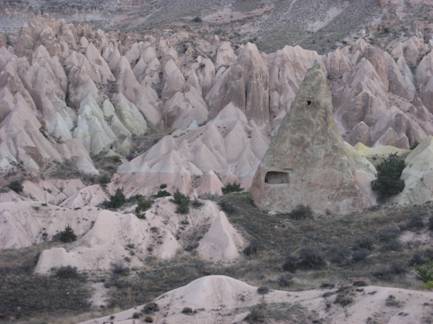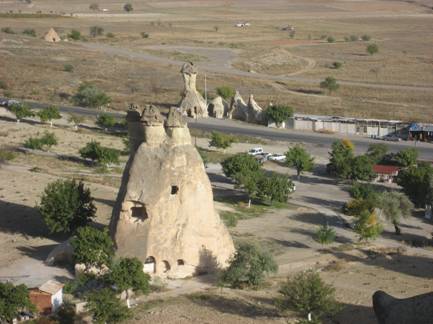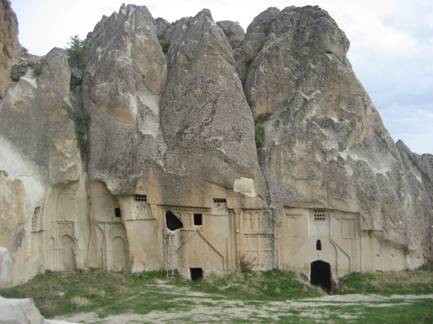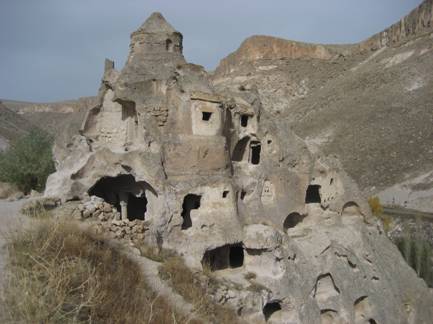Cappadocia

|
Whilst Red Panda was out of the water in Marmaris, we took the opportunity to take a trip inland to Cappadocia, an area of Turkey famous for its astonishing landscapes and rock-cut churches and towns carved out of the soft volcanic tuff. We had a rather gruelling 13 hour overnight coach journey over Turkey’s very poor roads, but once there the experience was worth the discomfort. We stayed in a converted cave house in the town of Urgup owned by a New Zealand couple who also sail so they give a warm welcome to “yachties”. On the two mornings we were there, they took us on wonderful early walks across the rugged valleys with their weird sculpted shapes and different colours of rock. The whole scene was given added enchantment by the numbers of hot air balloons drifting overhead, with some of them even sliding along the valley floors. We lost count at around 40 balloons but apparently there can be as many as 68 up at the same time! The lucrative business of taking tourists up has really mushroomed in the past two years according to our hosts, bringing in about €100 million a year now.
We hired a car and drove to some of the stunning valleys with churches and monasteries carved into the strange rock structures. The churches date from the very early days of Christianity (Cappadocia was one of the cradles of Christianity and St Paul preached there), up to the 11th and 12th centuries. Many of them have vivid frescoes and are carved out of the rock with pillars and arches to mimic a free-standing building. Often they are completely hidden, apart from the usual rectangular opening and you need some local knowledge to locate them. There are around 1,000 churches in the area!
We also toured one of the underground cities of which there are many more still waiting to be uncovered. These may date back at least 4-6,000 years and could hold an entire community, especially in times of danger. They go down 8 levels and have a sophisticated system of ventilation and water supply so that people could live underground for as long as was necessary. Like the cave houses, the temperature was fairly constant and meant a convenient warmth against the winter cold and a bearable summer cool.
As well as marvelling at the sites, it was very interesting to see a more genuinely Turkish part of the country with agriculture rather than tourism still the main activity. The villages were busy with the local ladies in their billowy “harem” pants and colourful headscarves sitting in groups on spread plastic sheeting, scooping out and leaving to dry the seeds from the pumpkins grown everywhere (pumpkin seeds are a very popular snack here). The potato harvest was also in full swing and the caves make the perfect storage facility for them. They are also used to store lemons which are trucked in from the citrus-growing areas some distance away and which apparently gain about 50% more weight whilst stored. Cappadocia is also proud of its wines, particularly whites, and our hosts made a delicious one from their own nearby vineyard.
If you haven’t been to this area you must; we recommend our hosts at Vivs House in Urgup (www.vivshousecappadoccia.com):
|





